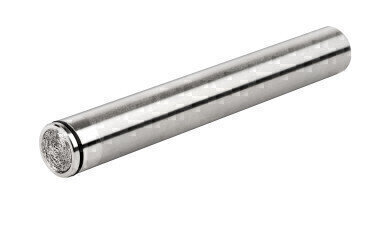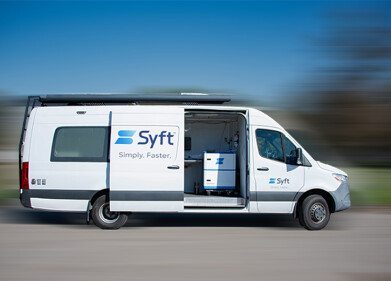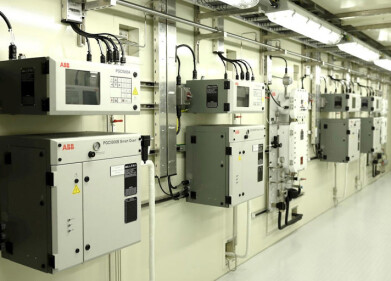Air monitoring
The Secret to Nitric Oxide Analysis
Jan 11 2016
The new generation of the BÜNOx 2+ gas converter is suitable for high conversion rates and feature maintenance interval prediction technology.
When converting NO2 to NO in emission measurement, the concentration of the gas can be determined with a conventional infrared detector at a low cost. Special reactor materials in the respective converters and a built-in maintenance computer which calculates the expected life of the reactor cartridge ensure efficiency and reliability.
Exchanging recipes is quite popular, now even among men. But people don’t want to disclose every recipe others consider good. Secret recipes create demand – copycats need to work hard and usually still don’t come close to the original. The same applies to metrology engineering. Bühler Technologies, expert in gas analysis, has been using a secret recipe to determine nitrogen dioxide (NO2) in flue gas cost-effectively. A secret recipe which makes the new BÜNOx 2+ gas converter particularly efficient.
In addition to many other gases, Federal Control of Pollution Act (BImSchG) and TA Luft require emission measurement to determine NO2. Gas analysis is also used for process and safety monitoring in various processes.
Inexpensive IR detection in place of complex UV sensor technology
The term NOx monitoring is usually used for short, meaning the concentration of NO2 and nitric oxide NO are to be determined. Whilst NO can be measured directly using conventional, relatively inexpensive infrared detectors, measuring the NO2 concentration directly would require expensive and most importantly high-maintenance UV sensors. But a simple device can be used to also determine NO2 using IR detectors. Here, gas converters convert NO2 to NO – and the NO concentration is measured twice, once before and once after conversion. The NO2 concentration can then be computed by subtracting the two values.
In addition to the necessary gas analysers, analysis technology specialist Bühler Technologies has also been offering the respective gas converter for almost ten years. Since BÜNOx was introduced to the market, a lot has changed in technology. The design and the features of the converter have therefore been completely redesigned.
Special converter materials for higher output and variability
One important improvement to the NOx gas converter BÜNOx 2+ is the reactor material, which catalytically reduces nitrogen dioxide, thus converting it to NO. Sven Mentzel, Analyser Product Manager at Bühler Technologies, explains: “NO2 decomposes at approx. 200 °C in any case. But to ensure this process is quick and complete, we use certain converter materials.” He doesn’t wish to elaborate on the detailed configuration – stating this is where secret formulas for an excellent conversion are used. Replacing the used reactor material is described as quite simple and requires no tools. Loosen a type of knob at the front of the unit by hand. Simply remove and replace the cartridge containing the catalyst located behind it in the furnace chamber of the container – and close again. A sealing ring safely seals the system when closed.
Maintenance computer for timely cartridge changes
For the user, it’s key for this to be convenient and easy. After all, the converter material is consumed over time. The cartridge life particularly depends on the NO2 content of the sample gas. In addition, the volume flowing through the gas converter affects how frequently a cartridge must be replaced. A new feature on the BÜNOx 2+ helps the user observe the necessary replacement intervals. It is a built-in maintenance computer which only requires entering the approximate NOx content and the gas volume per time unit. The user then receives information on the life of the cartridge and can schedule maintenance accordingly. Those using this NOxCal computer also know when to purchase replacement cartridges in advance. “No other unit on the market does this”, says Sven Mentzel. Other improvements are related to operability and menu navigation. The customer can tell straight away, so the product manager.
The reactor materials on the market not only vary in service life. The respective conversion rates and the maximum capacity also vary. The “universal weapon” by Bühler Technologies is the metal-based MC type filling material. It’s suitable for 99 per cent of applications: for high NO2 loads up to 300 ppm based on a flow rate of 70 L/h. The material is used in conversion temperatures up to 400 °C and also reaches a particularly high conversion rate of 97 per cent. For special cases, Bühler offers an alternative reactor material, the carbon-based type CC, which can be used at up to 200 °C and a maximum load of 120 ppm.
Replacement interval considers user experience
When revising the Bühler gas converter we were further able to counter the effect which resulted in increased pressure losses whilst operating a cartridge and its natural ageing. This also is a secret recipe, Mentzel says. With the measures taken, the cartridges could now also be operated on analysers with built-in, so relatively weak pumps through the service life without a problem. Typical service lives range from 18 months with a low NO2 load and gas flow, up to less than two months under high loads. Here the integrated maintenance calculator can provide important indications for maintenance staff. However, since the replacement interval is calculated merely based on laboratory studies, it may vary in actual use. The user can then incorporate his experience by for example entering an offset.
Long-life cartridges prolong service life
For extremely high NOx loads these service lives can be increased by using an optional long-life cartridge, even significantly, as Mentzel emphasised. These long-life cartridges are available for metal-based as well as carbon based converter material. It holds up to 70 per cent more material – an option for any application where audit authorities specify a specific service life. “If the regular cartridges come too close to the limits, a long-life cartridge can be used to be on the safe side”, Mentzel explains.
Digital Edition
AET 28.4 Oct/Nov 2024
November 2024
Gas Detection - Go from lagging to leading: why investment in gas detection makes sense Air Monitoring - Swirl and vortex meters will aid green hydrogen production - Beyond the Stack: Emi...
View all digital editions
Events
Jan 20 2025 San Diego, CA, USA
Carrefour des Gestions Locales de L'eau
Jan 22 2025 Rennes, France
Safety, Health & Wellbeing LIVE
Jan 22 2025 Manchester, UK
Jan 25 2025 San Diego, CA, USA
Jan 29 2025 Tokyo, Japan





















